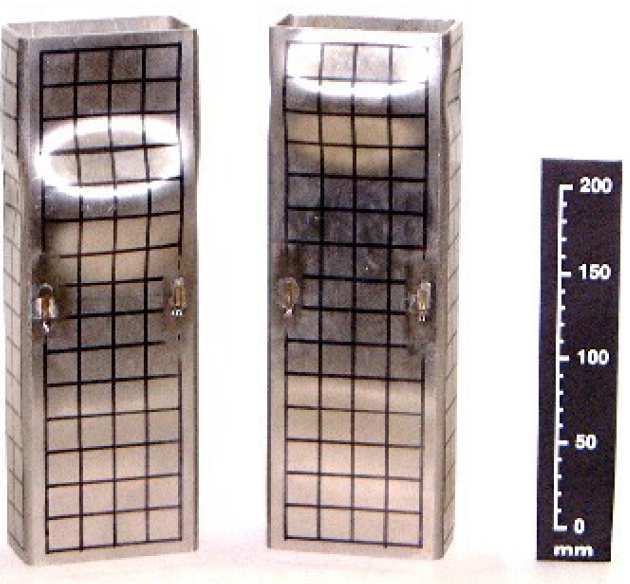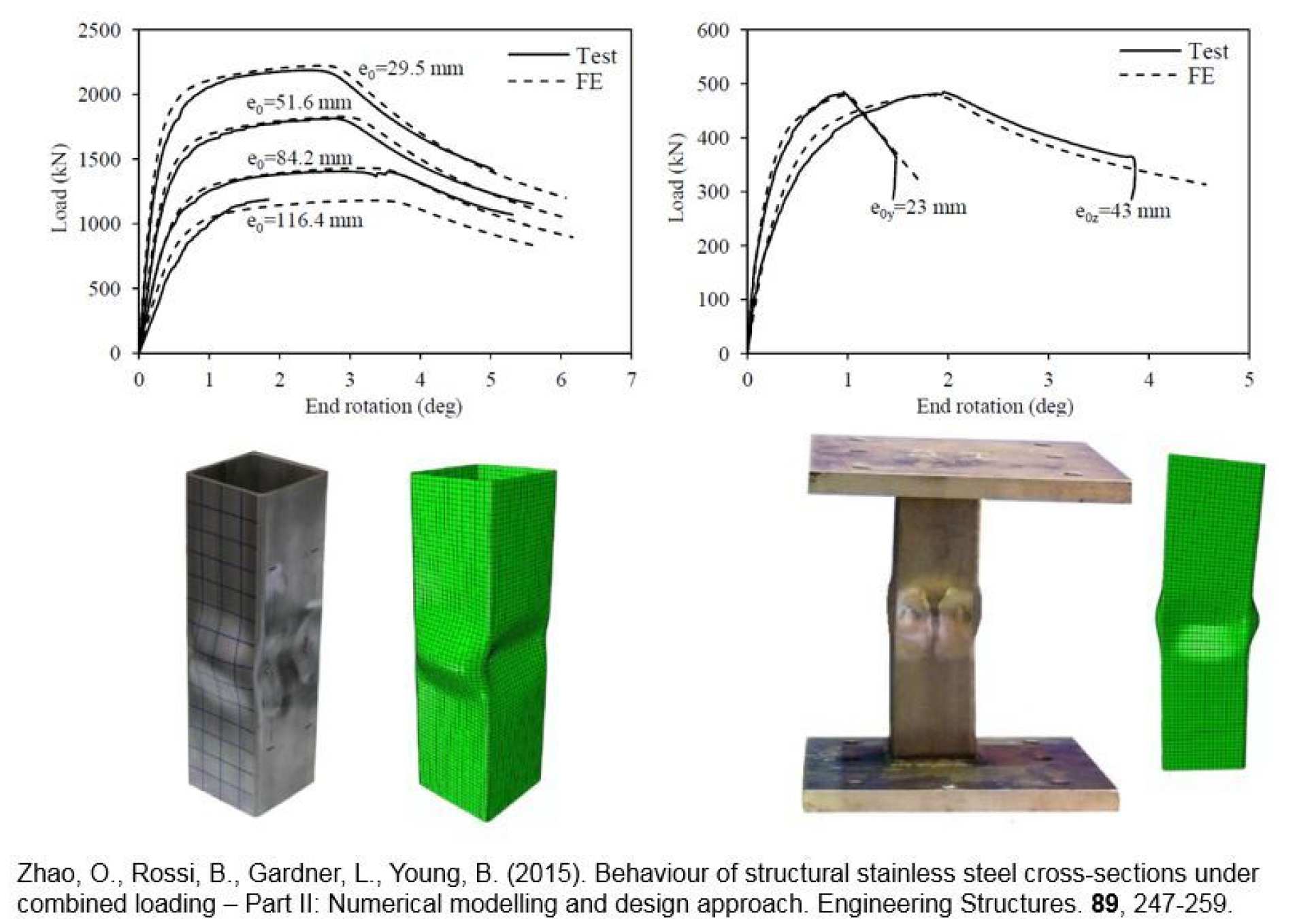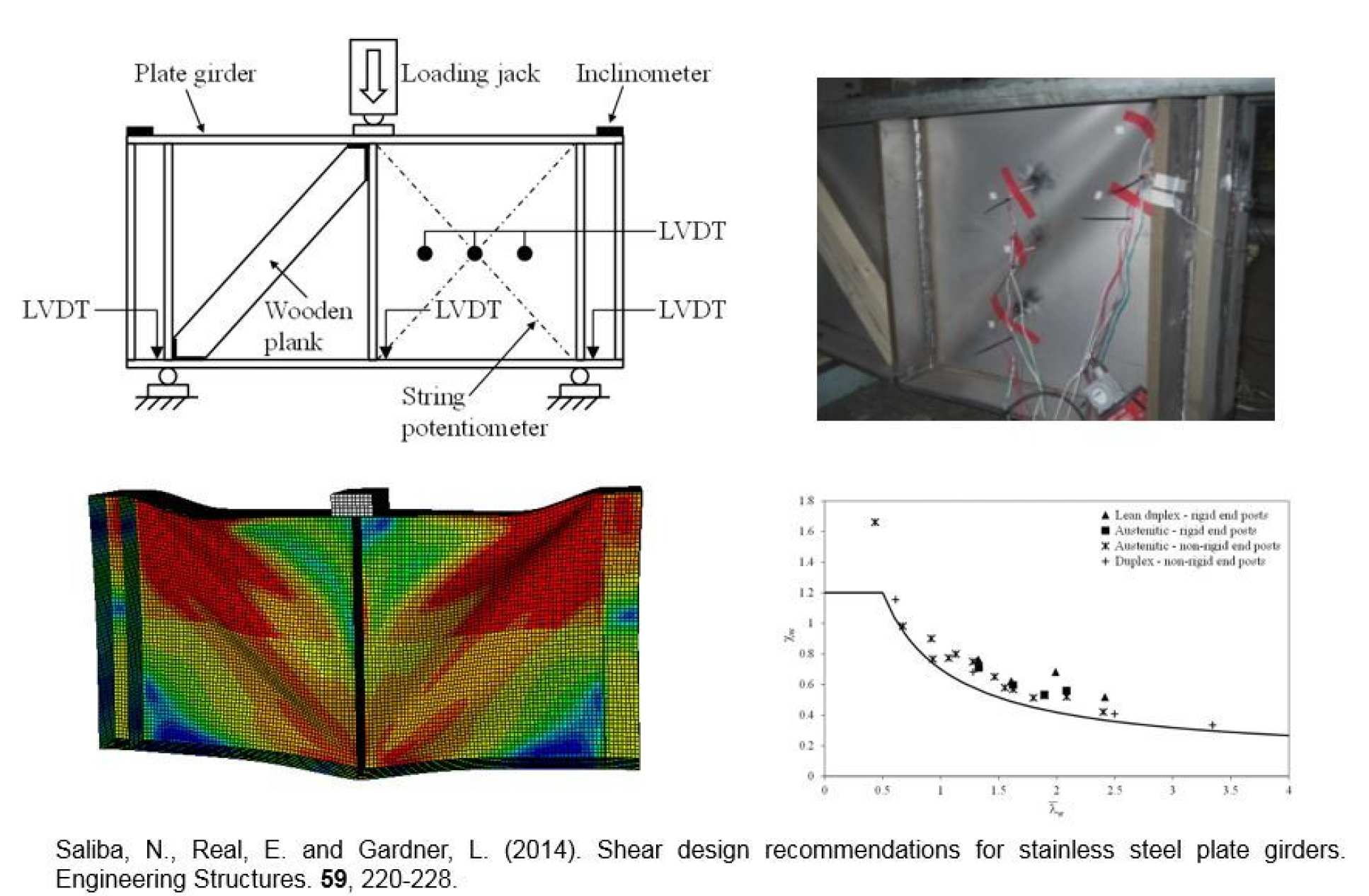Stainless steel structures
Introduction
Research into the behaviour and design of stainless steel structures has been carried out at Imperial College over the last 15 years. The research has been led by Professor Leroy Gardner and involved many PhD students and numerous undergraduate and MSc project students.
The primary focus of the research has been to develop an understanding of the behaviour of stainless steel as a structural material through experimentation and modelling and to generate design methods suitable for incorporation into international design codes. The research has been funded by EPSRC, the European Union and numerous industrial sponsors, principally Outokumpu. The key underpinning research contributions may be summarised as follows.
Experimentation
Rigorous experimentation has been undertaken on a range of structural stainless steel grades and section types. Innovative testing techniques have been developed [1,2], and much of the experimental data has been used to underpin the development of new design rules and methods [3-5] in international design codes and to determine their statistical reliability.

Numerical modelling
A consistent approach to the nonlinear numerical modelling of stainless steel structural components [6] and connections has been established. Models have been validated against a substantial pool of physical test results, and numerical prediction of the key performance measures has been achieved with a high degree of accuracy.
Comparisons with tests and subsequent parametric studies have enabled the development of universal expressions for modelling material stress–strain behaviour, enhanced strength corner properties, initial geometric imperfections (local and global) and residual stresses. Confidence in the sophistication and reliability of the developed numerical models has enabled further structural performance data to be generated and areas to be explored beyond those considered experimentally.
Development of design guidance
Development of design rules for many aspects of structural stainless steel design, including cross-section classification, member buckling, new section types (oval hollow sections), the capturing of cold-work strength enhancements during forming, new grades of material (lean duplex stainless steel) and connections. Furthermore, a new design philosophy for stainless steel structures that recognises the particular nature of the material stress-strain response, has been devised.
This approach, termed the continuous strength method (CSM), is based initially on deformation rather than strength and represents a radical departure from current practice. The CSM was established at Imperial and has been the topic of two prize winning papers published in 2004 and 2008 [3, 4] and numerous keynote addresses at International Conferences. The approach offers substantial increases in load carrying capacities (up to 25%) over existing design methods, is included in UK and North American design guidance for stainless steel and has been used in practice to achieve more efficient designs.
Example projects
1. Stainless steel sections under combined loading

2. Testing and FE modelling of plate girders

References
[1] Gardner, L. and Nethercot, D. A. (2004). Experiments on stainless steel hollow sections - Part 1: Material and cross-sectional behaviour. Journal of Constructional Steel Research. 60(9), 1291-1318. DOI: 10.1016/j.jcsr.2003.11.006
[2] Theofanous, M. and Gardner, L. (2009). Testing and numerical modelling of lean duplex stainless steel hollow section columns. Engineering Structures. 31(12), 3047-3058. DOI: 10.1016/j.engstruct.2009.08.004
[3] Gardner, L. and Nethercot, D. A. (2004). Stainless steel structural design: A new approach. The Structural Engineer. 82(21), 21-28. (Awarded IStructE Henry Adams Prize)
[4] Gardner, L. (2008). The Continuous Strength Method. Proceedings of the Institution of Civil Engineers - Structures and Buildings. 161(3), 127-133. DOI: 10.1680/stbu.2008.161.3.127 (Awarded ICE Palmer Prize)
[5] Cruise, R. B. and Gardner, L. (2008). Strength enhancements induced during cold forming of stainless steel sections. Journal of Constructional Steel Research. 64(11), 1310-1316. DOI: 10.1016/j.jcsr.2008.04.014
[6] Gardner, L. and Nethercot, D. A. (2004). Numerical modeling of stainless steel structural components – A consistent approach. Journal of Structural Engineering-ASCE. 130(10), 1586-1601. DOI: 10.1061/(ASCE)0733-9445(2004)130:10(1586)


